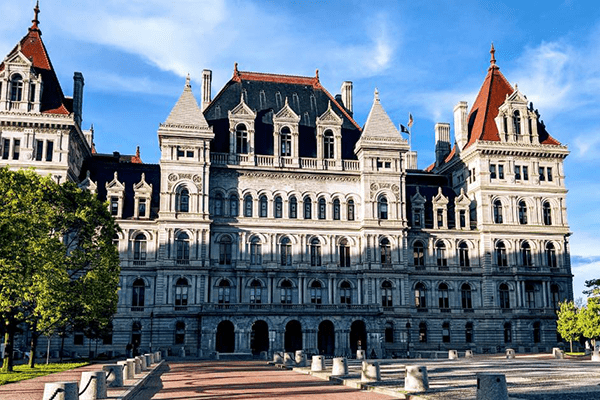|
RCBJ-Audible (Listen For Free)
|
Bill Is Aimed At Creating More Affordable Housing In Cities, Suburbs; Lessening Rent-Burdened Dwellers
STATE NEWS
New York lawmakers are considering a new bill that would end exclusionary zoning and allow for multiple units to be built on most lots earmarked for residential development.
State Sen. Brad Hoylman has introduced a bill that would allow multifamily construction on almost all residential lots, eliminate parking requirements in cities and villages, and prohibit larger municipalities from requiring large lot sizes for homes.
The legislation would prevent cities and villages from setting minimum lot sizes larger than 1,200 square feet. It would also bar them from requiring off-street parking.
In cities, landowners could build four-family dwellings on any residential lot, or up to six-family buildings within a quarter mile of a train station. In villages, builders could construct duplexes on any residential lot or six-family dwellings near transit stations.
The bill also addresses towns, setting a maximum lot size of 20,000 square feet, or 5,000 square feet if the parcel has access to sewer or water infrastructure.
“We need to end the policy of exclusionary zoning that disadvantages lower- and middle-income New Yorkers,” said Hoylman. “The affordability crisis is best addressed statewide.”
New York, which has been dealing with a growing housing crisis for years, wouldn’t be the first to introduce the measure. In September, California Gov. Gavin Newsom signed a bill that effectively bans single-family home zoning in the country’s largest state. The bill eliminated single-family zoning and essentially allowed up to four units to be built on lots previously set aside for one home. The state also passed a bill encouraging higher density near transit hubs. In 2019, the city of Minneapolis passed a law increasing all single-family zoning to triplexes.
In New York, as in nearly every state, the state government leaves zoning to localities. But Connecticut, Massachusetts and California have passed laws to spur increased density in suburbs in recent years and the movement is gaining traction nationwide.
New York has some of the most exclusionary zoning in the country, particularly in the suburbs of Westchester and Long Island, according to a study by the Furman Center at New York University.
“The results of these policies are clear: a state with fewer homes, higher rents, higher levels of segregation, higher carbon emissions, and a slower economy,” wrote Hoylman.
Hoylman’s bill is likely to face strenuous opposition from suburban, exurban, and rural towns where density proposals are often opposed by local residents. But urban planners and advocates of affordable housing favor allowing multiple dwellings on what are now single-family lots.
Supporters say the bill’s provisions increase housing supply, driving down prices that have kept many severely rent-burdened and first-time buyers priced out of the market. Critics say that it damages the fabric of neighborhoods. Rockland’s leaders have acknowledged the need to provide housing for millennials and seniors in the county’s towns and villages.
The Furman Center has found that New York has some of the most exclusionary zoning in the country, which has slowed housing production. New York’s suburbs are “national laggards” in housing development, according to Furman’s report, which Hoylman cited in introducing the bill.
While California has been out front on single-family zoning, it is instructive to look at the state’s protracted adaption of permitting accessory dwelling units, such as granny flats, backyard cottages, or garage apartments. The state first required cities to allow ADUs in 1982, but cities and suburbs threw up so many regulatory barriers that it was nearly impossible to build a legal ADU, and most existing ADUs were illegal. It would take more than three decades for the statehouse to get serious about ADU legalization, and the passage of five separate bills, starting in 2016, to unclog the logjam.
New York is considering ADU legislation that would allow for construction and permitting of ADUs in all single-family zones statewide, regardless of local zoning codes prohibiting them.
Local leaders in Rockland, including Clarkstown Supervisor George Hoehmann are pushing back on the proposed law, saying it tramples on “home rule,” or the rights of towns to govern themselves. Assemblyman Mike Lawler has also expressed his opposition to the proposed bill.
Homeowners often build ADUs either to house family members or to rent for extra income to help subsidize the cost of home ownership. ADUs also assist with creating affordable housing units.
According to the Regional Plan Association, “ADUs conversions can have many positive impacts on communities,” such as providing secondary income allowing aging homeowners to stay in their homes longer, providing spaces where older relatives and younger children can live together, bringing new residents to the community who contribute to the economy, and reducing the cost of maintaining and building municipal infrastructure by increasing density.













